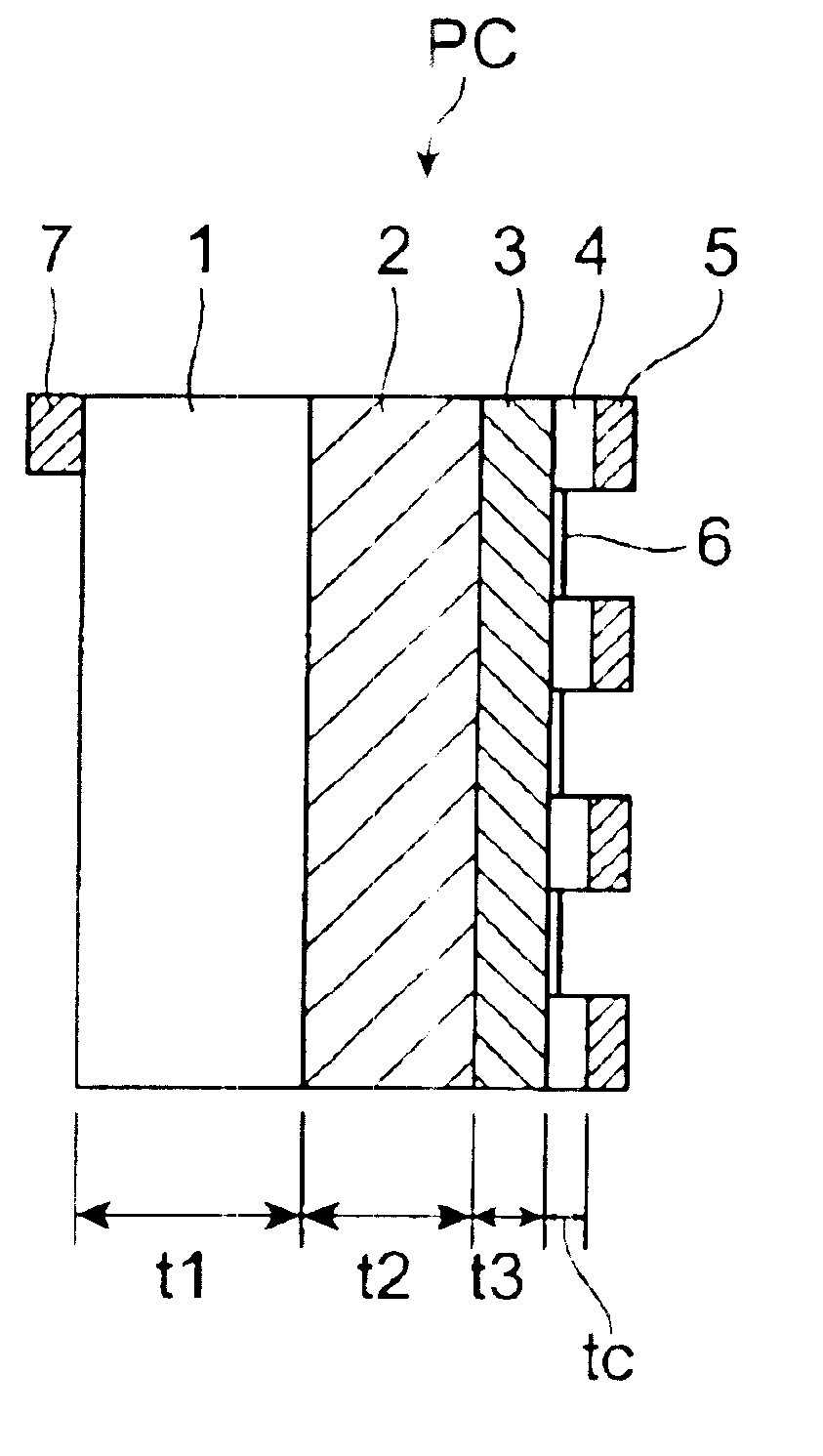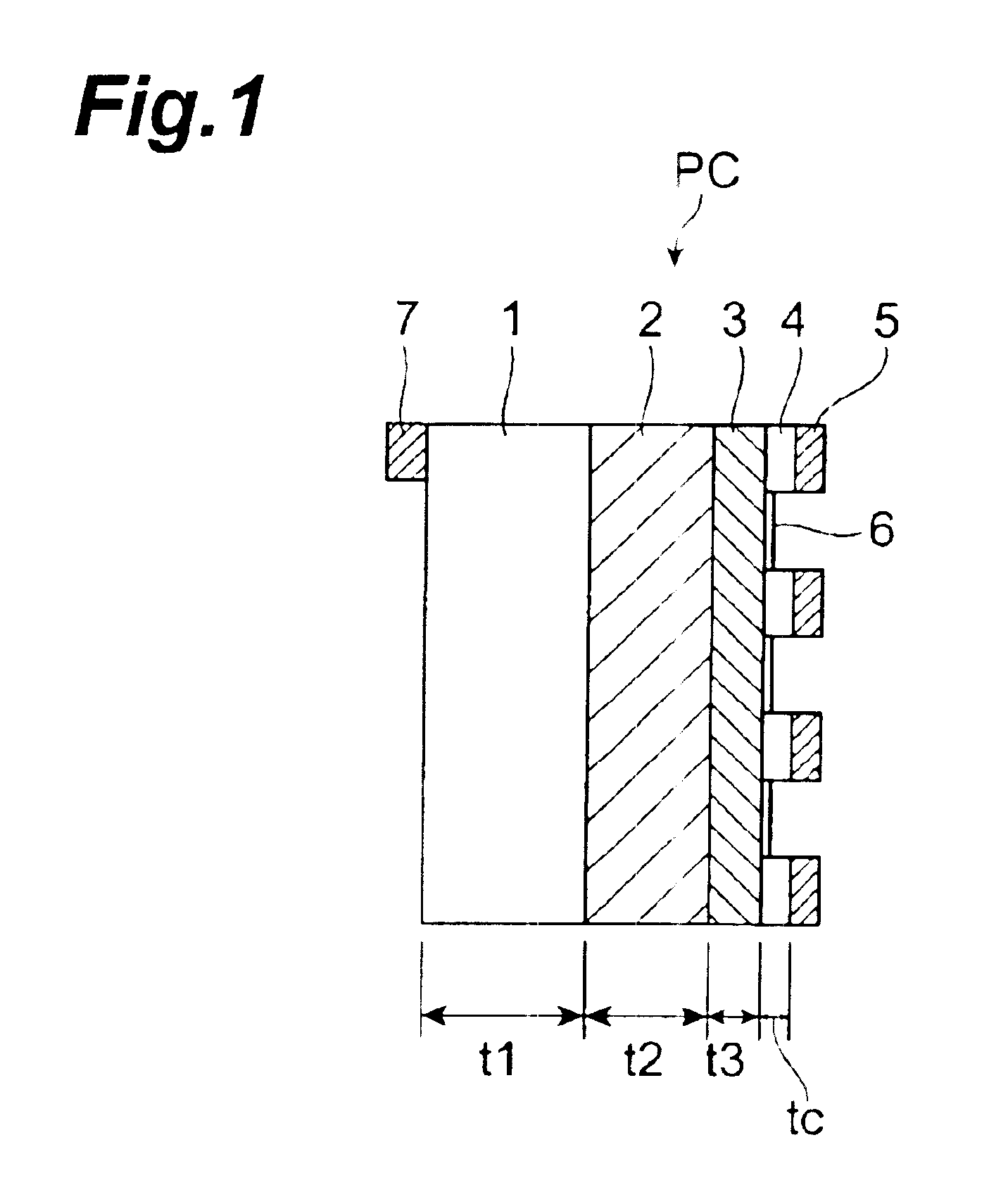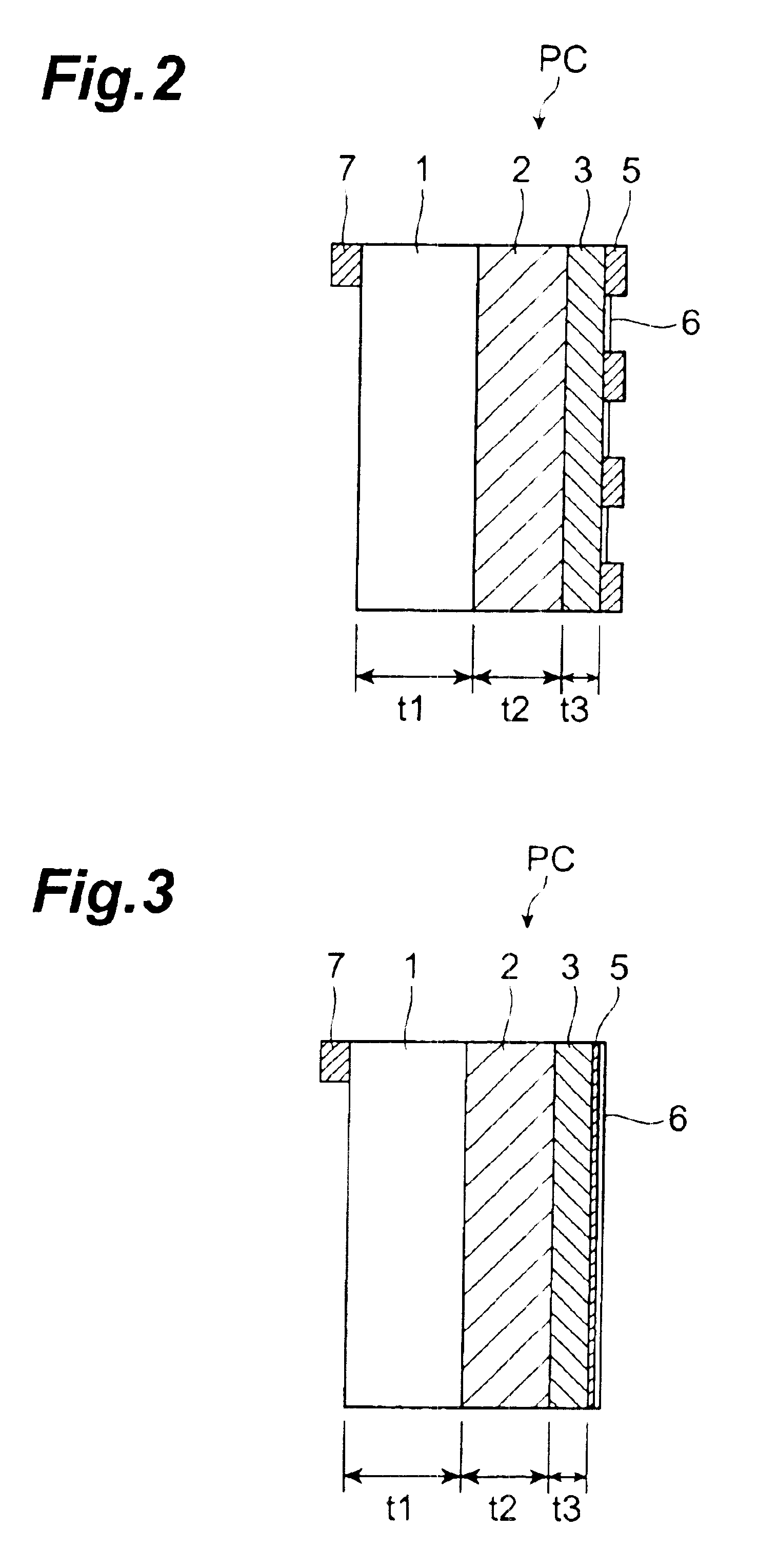Semiconductor photocathode
a technology of semiconductor photocathode and photocathode, which is applied in the direction of discharge tube main electrode, image-conversion/image-amplification tube, and screen-mounted tubes, etc., can solve the problems of insufficient characteristics of semiconductor photocathode, shorten the transit time necessary for the passage of electrons, and suppress regions of overlapping electrons due to diffusion.
- Summary
- Abstract
- Description
- Claims
- Application Information
AI Technical Summary
Benefits of technology
Problems solved by technology
Method used
Image
Examples
first embodiment
(First Embodiment)
[0025]FIG. 1 is a longitudinal sectional view of a semiconductor photocathode PC related to a first embodiment. First, the construction of the semiconductor photocathode PC will be described.
[0026]The semiconductor photocathode PC of this embodiment, which is disposed in a vacuum opposing to an anode not shown in the figure, includes at least a light-absorbing layer 2, an electrode transfer layer 3, a contact layer 4 and an electrode layer 5 which are sequentially laminated on a semiconductor substrate 1. The contact layer 4 and electrode layer 5 are patterned in mesh (grid) form, and an active layer 6 is formed on an exposed surface of the electron transfer layer 3 at least within openings of this mesh.
[0027]Here, the explanation is given here by taking as an example a case where a grid pattern is used as the pattern of the contact layer 4 and electrode layer 5. However, various patterns can be applied as long as the electron transfer layer 3 is exposed in an almo...
second embodiment
(Second Embodiment)
[0057]FIG. 2 is a longitudinal sectional view of a semiconductor photocathode PC related to a second embodiment. The semiconductor photocathode PC of the second embodiment differs from that of the first embodiment in that the formation of the contact layer 4 shown in FIG. 1 omitted, with the result that the electrode layer 5 and the electron transfer layer 3 are in direct Schottky contact with each other. Any materials can be used as the electrode material in this case as long as they come into Schottky contact with the electron transfer layer 3. However, a selection may be made in consideration of processes such as etching which are to be performed later. Other points of structure including the thickness of each layer and the like are the same as the photocathode of the first embodiment.
[0058]For the manufacturing method, the second embodiment differs from the first embodiment in that the formation of the contact layer 4 (Step (4)) is not performed after the form...
third embodiment
(Third Embodiment)
[0059]FIG. 3 is a longitudinal sectional view of a semiconductor photocathode PC related to a third embodiment. The semiconductor photocathode PC of the third embodiment differs from that of the second embodiment in that the electrode layer 5 shown in FIG. 2 is formed on the whole exposed surface of the electron transfer layer 3, that the thickness of the electrode layer 5 is small, and that the active layer 6 is formed on this thin electrode layer 5. Any materials can be used as the electrode material in this case as long as they come into Schottky contact with the electron transfer layer 3. Other points of structure including the thickness of each layer and the like are the same as those of the photocathode of the second embodiment.
[0060]The thickness of the electrode layer 5 has a great effect on the photoelectric conversion quantum efficiency of the photocathode. Specifically, when the thickness is smaller than a specific film thickness, the surface resistance ...
PUM
 Login to View More
Login to View More Abstract
Description
Claims
Application Information
 Login to View More
Login to View More - R&D
- Intellectual Property
- Life Sciences
- Materials
- Tech Scout
- Unparalleled Data Quality
- Higher Quality Content
- 60% Fewer Hallucinations
Browse by: Latest US Patents, China's latest patents, Technical Efficacy Thesaurus, Application Domain, Technology Topic, Popular Technical Reports.
© 2025 PatSnap. All rights reserved.Legal|Privacy policy|Modern Slavery Act Transparency Statement|Sitemap|About US| Contact US: help@patsnap.com



